TAILORED CLOTHING WEEK: VENDOR VIEW

Five of our industry’s key tailored clothing manufacturers share lessons learned from the pandemic and where they believe the industry is headed.
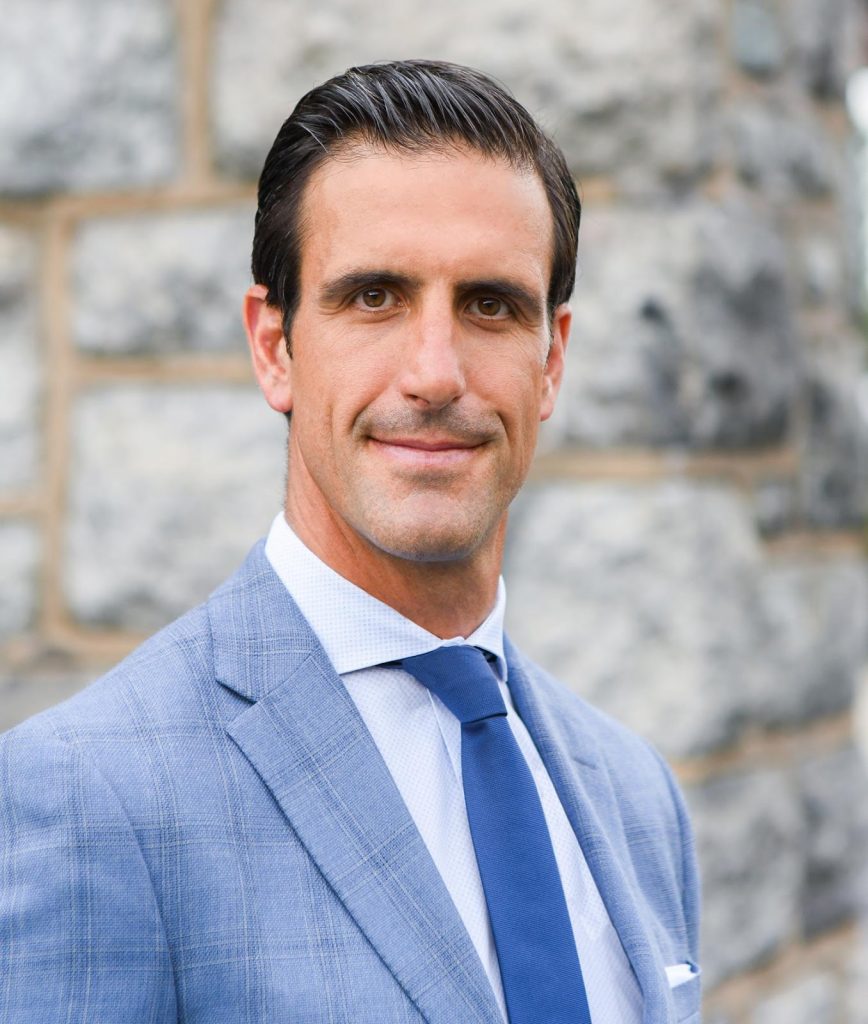
Dan Orwig, Peerless Clothing International: “Men are now looking forward to not wearing sweatpants.”
A key lesson from the pandemic is “do more with less.” We’re learning we can all work on lean inventories, allowing faster turns with fewer promotions resulting in higher AURs. It’s an important lesson that we hope will become the standard. Consumers are paying more for everything these days, from Nikes and Teslas to food and gas. As long as we continue to deliver on our promise of high quality at great value, consumers won’t be shocked by higher suit prices. With continued strong demand for tailored clothing, stores won’t need major markdowns to clear goods. AURs across the board have been at historic levels. That said, there’s always room for improvement.
It’s been exciting to witness dress wear resonate with consumers. I’ve been optimistic about a suit rebound for a while but never expected the current levels. With continued pent up demand for weddings and social occasions projected to be 25% over historical averages, our optimism remains strong. It’s all about the occasion and the SUIT!
Coming from a supply chain background, I’ve always believed in diversified sourcing, but the pandemic has magnified its importance. One of our biggest strengths at Peerless is the supply chain infrastructure we have in place. We’ve been able to survive the pandemic with our highly diverse resources and balanced global production in Asia, Africa and North America. Of course, 2021 was challenging: our Vietnam workshops were closed for 100 days and increasing container costs have been difficult to absorb. Fortunately, we’re working more closely than ever with our retailer and brand partners. I believe all that we’ve been through together has made our relationships even stronger.
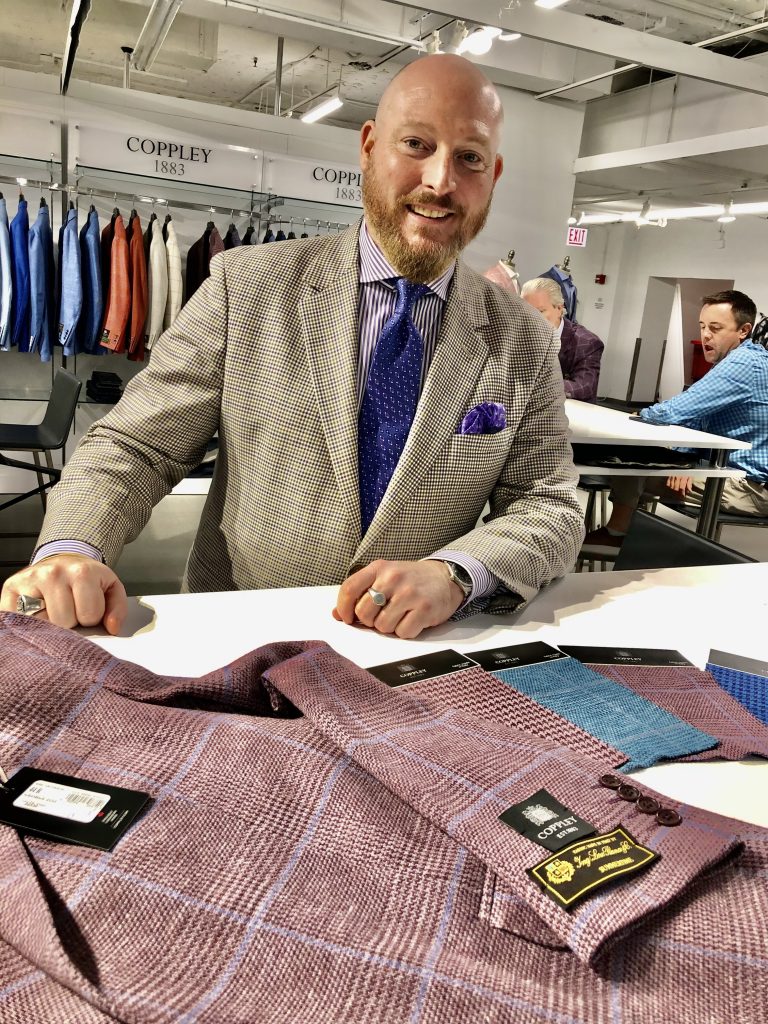
Tony Maddox, Coppley Apparel: “We ordered early to get fabric six months ahead of usual.”
From this pandemic, we’ve learned to work with our Italian partners well in advance to ensure fabric delivery without the hold-ups we had last year. There was such a run on basics third quarter that in six weeks, we sold the same number of basic black and navy blazers we typically sell in six months. So for 2022, we ordered early to get the fabric in six months ahead of usual.And bookings on our fall 22 collections are already almost double.
Also, since the pandemic, we brought back everyone who had been let go, adding an additional 20 employees in both sewing and technical positions. And we’re reinstating six-to-10 month training programs to find our next generation of tailors, both through colleges and through family members of existing employees.
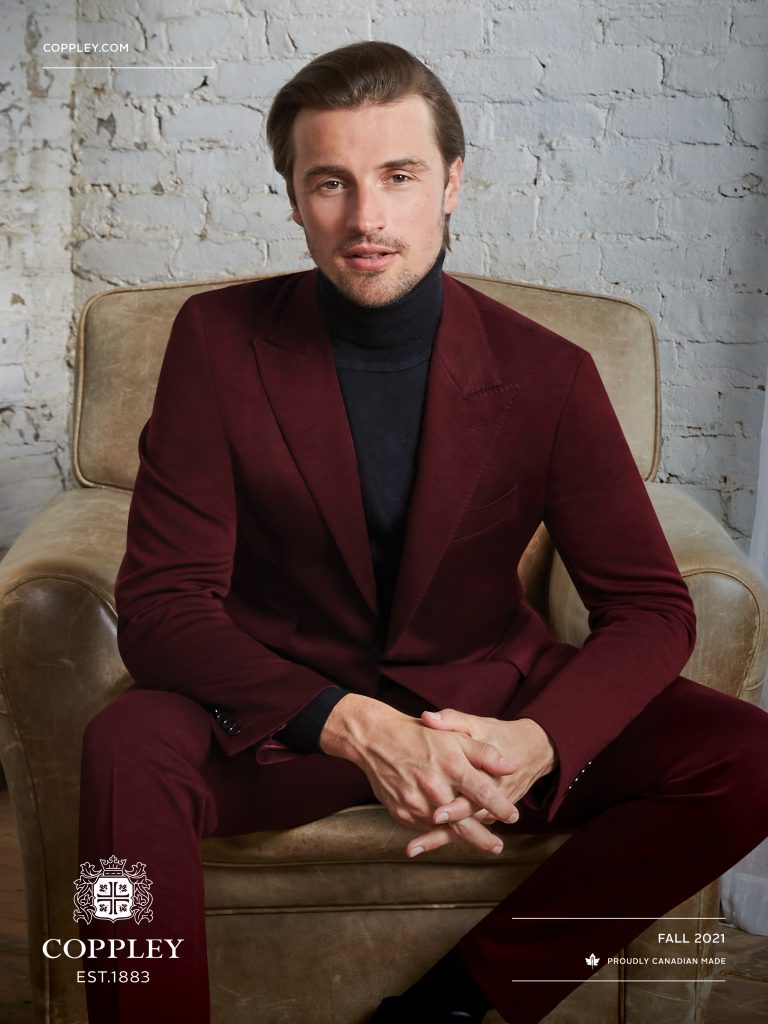
In general, tailored clothing business was off only slightly in 2021 vs 2019. Buyers spent most of their open-to-buy on conservative, in-stock merchandise which sold out and experienced the most growth ever, driven by weddings and events. Custom was down only marginally (9 percent) and we’re projecting notable increases for next year, getting back to our normal delivery cycle of seven to 12 working days for MTM. Fashion is still important to us and our spring ‘22 collection is our most colorful ever. We’re still selling more suits than sportcoats, and we’ve seen a definite uptick in vested suits.
Clearly, the U.S. market has been carrying us, especially in the southeast with strong sales increases even though few men are back to the office yet. From everything I’ve heard and read, event business (weddings, graduations, celebrations) will continue strong for the next three years. We are a classic lifestyle brand with a hint of irreverence and we’ve made sure we can offer new models as needed, be it pleats (we have two updated classic pleated trousers in the collection), or wider lapels (available in custom). Our retailers sold out of everything they had hanging so they now have dollars available for new fall fashion, the best way to keep things fresh. As for a model change: a looser style may be on the horizon but I don’t think we’re there yet.

Gianluca Isaia, Isaia: “Today, we’re able to offer a tailor-made service not just for suits and sportscoats but also for sportswear.”
The pandemic has changed the world and has certainly changed the demand for tailored clothing compared to the past. Working from home and traveling much less, people moved toward a different and less formal type of clothing: knitwear, loungewear, sport trousers/denim. For this reason, we decided to focus more on sportswear, compared to what we did in the past.
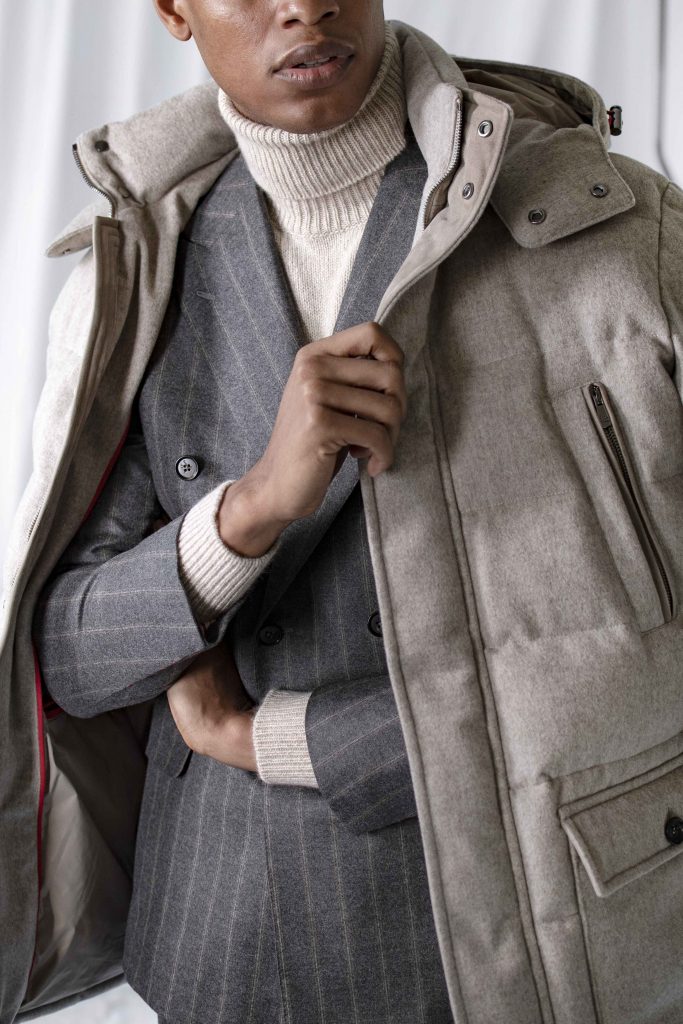
These difficult months have given us the opportunity to take some time to study and specialize in the production of new garments such as outerwear and leather that we did not previously produce in our supply chain. Today, we’re able to offer a tailor-made service not just for suits and sportscoats but also for sportswear.
In addition, we’re in the process of opening five new stores: one in Italy (St Moritz), two in America (Miami, Chicago) and one in Canada (Toronto). All told, we are quite optimist about the future of men’s fashion.

Nelson Suriel, Jack Victor: “The trick is to keep showing new!”
With the comeback in weddings and events, tailored clothing has been in high demand. We get calls every day for tuxedos and black suits. Whereas two years ago, our clothing business might have been 75 percent sportscoats, 25 percent suits, it’s now more like 50/50. Tuxedos have been about 15 percent of the business but could have been more if we had more (we remedied this situation for spring…) We bought aggressively for fall 2022, and feel confident that the positive trend will continue, especially with the way our brand has changed.
In a nutshell, we’ve evolved from a suit company to a tailored-based lifestyle collection. We’ve added upscale knits, wovens, trousers, sweaters and softcoats (some that look like sweaters) that mix perfectly with our more tailored pieces. But even within the more tailored segment, the fabrics (super 180s) and constructions (butterfly linings, no sleeve heads or shoulder pads, lighter chest pieces) are softer and more comfortable than ever.

I don’t think the supply chain back-ups will be an issue beyond first quarter: we’ve made plenty of purchases; we’re clearly covered. Years ago, we would buy only what we were sure to sell; these days, we have a full stock book and carry inventory so our retail partners don’t have to.
What we’ve learned from the pandemic, and the secret of our growth I believe, is the importance of taking a strong stand on fashion, even within our in-stock programs. What differentiates better specialty stores from department stores is special product! We’ve also learned to be flexible and open to change. For example, we’ve always offered MTM as an accommodation, mostly for hard-to-fit guys. We’re now revamping it for fall ’22 and expanding our MTM fashion offerings.
Bottom line, for retailers and brands: the trick is to keep showing new!
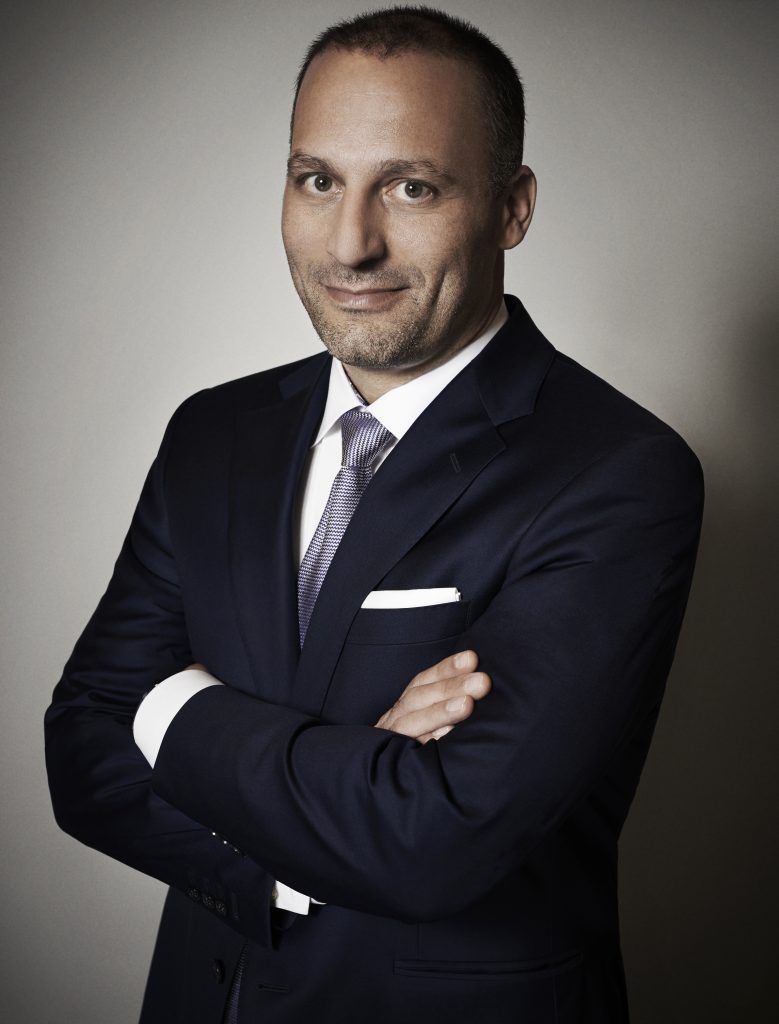
Stephen Granovsky, Samuelsohn “While change is good, the dramatic pace of change is challenging.”
The pandemic has provided a lesson in agility and the need to pivot. Anyone who says business has been predictable is lying.
Pre-pandemic, we’d already started a very strong shift from dressy to casual. We created our Vue collection to express this hybrid, work/play dress mode. We built a comfort sportcoat collection for Spring 21 and a collection of what was essentially luxury sweatsuits. Then in July, all stores wanted were dark navy basics; we didn’t have nearly enough to meet the demand.
Since then, we’re seeing a strong shift back to dressy: the customer is telling us they want dress clothing that’s true dress clothing, even leaning toward very traditional suits, which is shocking to me. We’re completely sold out of solid, black, charcoal and navy suits. We’re also seeing a definite shift from sportcoats back to suits. Of course, the pendulum will swing again: my guess is in 12-24 months. So to run a clothing business today, you need one eye on the short-term and one on the long-term. A big chunk of 2021 business was in day-to-day replenishment basics. While change is good, the dramatic pace of change is challenging.

The demand side is not the problem: there’s plenty of demand out there! October was a record month for suit sales. Our challenge is supply. And the rising cost of doing business.
It’s hard to react to today’s operational challenges. I used to spend most of my time on the front end: sales and product. Now I worry about operations: how to deliver the quantity and quality that customers are demanding. We still produce almost everything in Montreal and we’re definitely experiencing a shortage of workers which means we’re paying a lot of overtime. And we can’t just suddenly increase prices so the bottom line is challenging. Between our two factories (Montreal and Rochester), we ultimately want to add 150-200 people; at the moment, we’re looking to hire at least 60. Recruiting has become a core competency: we need to get better at it. We’re working with the city of Rochester, and the county: recent immigrants often arrive with tailoring skills. Already, we count 21 different languages spoken in our Rochester facility and 19 in Montreal.
As for suit models, while we’re essentially traditional, we’ve made some interesting adjustments in fit: not really looser but the suit hangs a bit differently, the leg is formulated differently. We want to be stylish but not trendy. We’ve kept our hybrid collection slim because it’s so comfortable…
And as for the supply chain situation, it’s surprisingly stable at present. The real issues are higher costs of raw materials and freight. Retailers are buying earlier, knowing prices will go up. I’m projecting a 5-10 percent overall cost increase that we won’t pass along. We need to be as competitive as possible.


